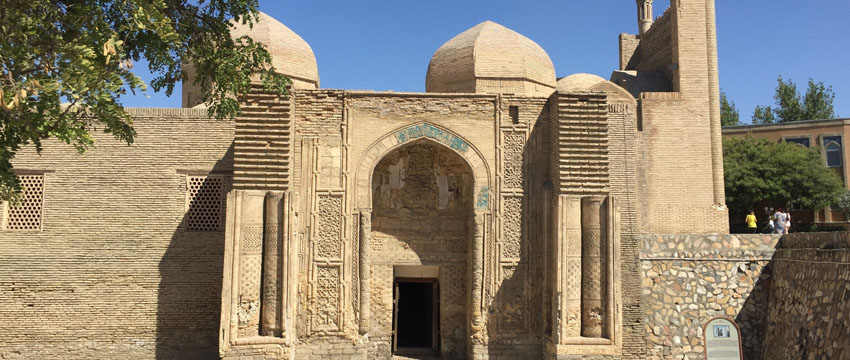With over 140 architectural monuments, Bukhara is undoubtedly the place to be if you’re a history geek or interested in history to the slightest extent. Known as city-museum of Uzbekistan, it is one of the topmost visited cities in Uzbekistan and Central Asia.
History Of Bukhara
The history of Bukhara goes back two millennia when it was first inhabited by the Aryans. The colossal amount of architectural monuments can be attributed to the fact that it was strategically located in the Silk Road route and long been a center of trade, commerce, culture, and scholarship. When the Samanid Empire was at its peak, the city of Bukhara became the intellectual center of Islamic World. Under the Russian rule, it was integrated into the Uzbek SSR.
Major Tourist Sightseeing Places InBukhara:
Po-i-Kalyan Complex
This architectural complex is one of the most important ensembles in Uzbekistan. It consists of four monument and the four prominent structures in the complex are:
- Kalan Minaret
- Kalan Mosque
- Mir-I Arab Madrassah
- Amir-Allimkhan Madrasah
Khoja-Gaukushon Ensemble
This ensemble is one of the largest in the city of Bukhara built in 1570 and it comprises of mosques, minarets, and madrasahs. Gaukushon means “one who kills bulls” as there was previously a slaughterhouse in this place.
Lyab-i Hauz
Lyab-i Hauz is the name given to the area surrounding one of the remaining hauz (ponds) in Bukhara. This is part of the Lyab-i Hauz ensemble which surrounds the pond from three sides.
Char Minar
Also known as Madrasah of KhalifNiyaz-kul, it is a marvelous building located in the northeast of Lyab-i Hauz. The main edifice of this building is a mosque which has a rather unusual shape from outside, but familiar from the inside.
Abdulaziz-khan Madrasah
Often compared with Ulugh Beg Madrasah for its opposing structure, it is rich in artistic decoration and at the same time grandeur and bigger than Ulugh Beg Madrasah.
Magoki-Attori Mosque
This mosque is one of the oldest in Bukhara and located in the center of the city. Previously there used to be a temple which was destroyed by the Islamic force and they in turn replaced it with a mosque which is now known as Magoki-Attori.
Samanids Mausoleum
Deemed one of the highly esteemed architecture of Central Asian architecture, it was the burial place of Ismail Samani, an influential Samanid ruler. During Soviet era, an amusement park was built next to this shrine which is still operation to this day.
Chashma-Ayub Mausoleum
This mausoleum is located in the center of a small, ancient cemetery where there is a well the water of which is considered holy and healing.
Ark Fortress
This is a massive fortress which in addition to being a military structure was a town inhabited by various royal figures in Bukhara. Today it is a museum covering the fortress history and is a major tourist attraction.
Memorial complex of Naqshbandi
Located 12 Km from Bukhara is the burial place of BahauddinNaqshbandi, the founder of Naqsbandi order. It is now a major pilgrimage place in Bukhara with mosques, minarets, madrassah, and necropolis.
Bukhara with its sheer number of marvelous monuments fails to disappoint tourists who come with a load of expectation. As there are just so many things to see, you can keep coming back to Bukhara multiple times and still get to see something new each time you visit.
